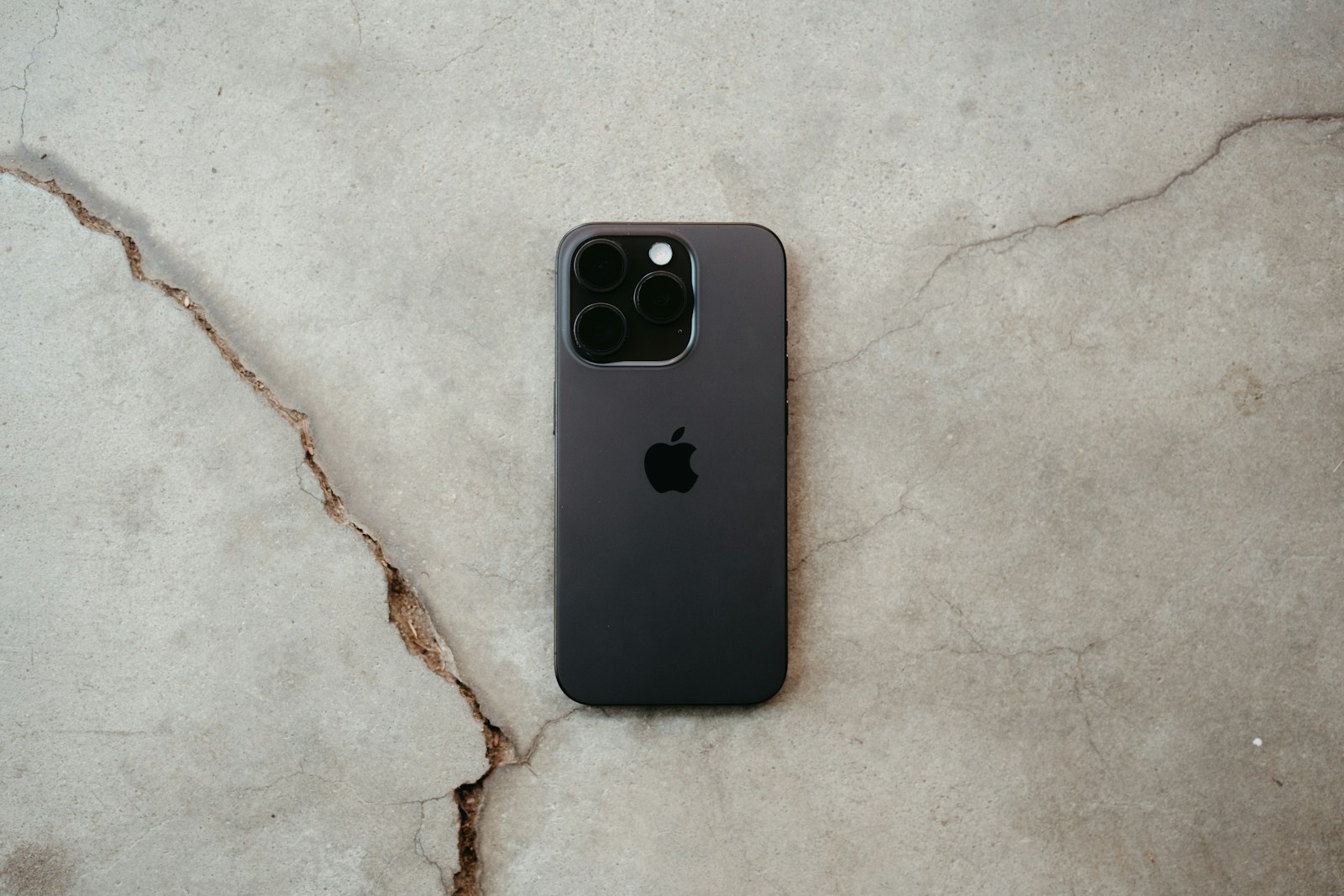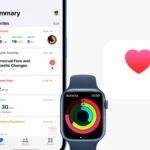Apple’s upcoming iPhone 17 series is poised to transform how we use our smartphones with a major focus on artificial intelligence. Leaks suggest the new lineup will include a super-slim iPhone 17 Air model alongside significant AI capabilities across all versions. The iPhone 17 Pro is expected to include 12GB of RAM specifically to support more advanced AI functions, a substantial upgrade from current models.
These new phones aren’t just about looks, though Apple is certainly making them thinner and more elegant. The selfie camera on all iPhone 17 models, including the Air, will reportedly be upgraded to 24 megapixels, greatly improving photo quality. This hardware boost combined with Apple Intelligence creates a more powerful user experience.
The company has faced some delays with its AI features, but the iPhone 17 seems built to make up for lost time. Apple appears to be moving toward a slimmer, port-free era with these new devices, balancing cutting-edge technology with the sleek design that fans expect.
What the Upgraded Neural Engine Could Mean for iPhone 17
Apple’s upcoming iPhone 17 is shaping up to be one of the company’s most AI-focused devices to date. At the center of this transformation is a redesigned Neural Engine expected to arrive with the new A19 Bionic chip. Built on TSMC’s enhanced 3nm+ process, this chip isn’t just a step forward in performance—it’s a leap toward on-device AI processing that could redefine how iPhones handle everything from photography to Siri commands.
Comparing AI Capabilities: iPhone 16 Pro vs. Expected iPhone 17
| Feature | iPhone 16 Pro (A18 Pro) | Expected iPhone 17 (A19 Bionic) |
|---|---|---|
| Neural Engine Cores | 16 cores | Potentially 20+ cores |
| AI Processing Speed | ~38 trillion ops/sec | Estimated 50+ trillion ops/sec |
| Chipset | A18 Pro (3nm) | A19 Bionic (3nm+) |
| Siri Responsiveness | Hybrid (Cloud + On-device) | Mostly on-device |
| AI Features | Apple Intelligence, enhanced photo editing, transcription | Real-time AI image generation, smarter Siri, advanced contextual awareness |
These upgrades signal a shift in how Apple’s devices will approach artificial intelligence—moving from impressive enhancements to deeply integrated, real-time intelligence.
What This Means for Everyday Use
Apple’s Neural Engine is the brains behind on-device machine learning, and a more powerful version in the iPhone 17 could unlock:
- Instant Voice Recognition: Siri could become significantly more responsive, context-aware, and capable offline.
- Next-Gen Photography Tools: Expect real-time scene detection, auto object removal, and possibly AI-assisted image creation.
- Accessibility Improvements: More accurate real-time captions, voice translation, and improved assistive touch functions.
- Smarter Keyboard Experience: Better autocorrections and word predictions tailored to your writing style.
- Boosted AR Capabilities: Sharper object tracking and scene awareness in augmented reality applications.
These aren’t gimmicks—Apple is looking to make AI work in ways that quietly improve your experience without feeling intrusive or experimental.
Apple’s AI Trajectory and Industry Competition
With iPhone 16 Pro, Apple introduced “Apple Intelligence”—its first official branding for AI-driven experiences. That included smarter Spotlight suggestions, on-device transcription, and AI-powered editing tools. But Apple’s approach is distinct from rivals like Google and Samsung. Rather than offloading tasks to cloud servers, Apple continues to prioritize privacy and speed through on-device processing.
“Apple’s challenge isn’t hardware—it’s making AI features feel natural and useful in everyday life,” notes one tech analyst.
This context is important because while the A19 chip may be powerful, its success hinges on whether Apple delivers features that feel effortless and meaningful.
What to Expect in iOS 19
The iPhone 17 is expected to launch alongside iOS 19, which could serve as the foundation for Apple’s biggest AI update yet. While still unconfirmed, early rumors point to:
- A fully redesigned Siri with smarter contextual replies
- AI-curated content in apps like Photos, Mail, and Safari
- Smart scheduling and notification filtering
- System-wide personal assistant features
- On-device AI generation tools (e.g., image or text summarization)
If even half of these features land, iOS 19 could be the tipping point for making AI a daily part of the iPhone experience.
Is Apple Setting the Stage for a Smarter iPhone Era?
Apple’s push into AI is no longer theoretical—it’s happening, and the iPhone 17 could be the moment where everything clicks. The stronger Neural Engine, built into the A19 Bionic, may be the key to turning Apple’s controlled AI ambitions into tangible, daily tools.
While competitors have rushed flashy generative features to market, Apple’s focus seems to be on reliability, privacy, and deep system-level intelligence. If successful, the iPhone 17 won’t just be the next iPhone—it could be the first truly smart one.
Key Takeaways
- iPhone 17 Pro models will likely include 12GB of RAM to power next-generation AI features and functions.
- Apple is creating its thinnest phone yet with the iPhone 17 Air while upgrading camera capabilities across all models.
- Apple Intelligence on the new hardware should enable better multitasking, privacy features, and overall performance.
Unveiling the Revolutionary iPhone 17 Series
Apple’s upcoming iPhone 17 lineup promises significant advances in AI capabilities and design innovation. The new models feature improved hardware specifically built to handle more advanced artificial intelligence tasks.
The AI-Powered Future: iPhone 17 and iPhone 17 Pro
The standard iPhone 17 and iPhone 17 Pro models are set to receive major AI enhancements. The Pro model will include 12GB of RAM, a notable upgrade from previous generations. This RAM boost will significantly improve Apple Intelligence performance.
The extra memory allows the devices to handle more complex AI tasks without slowing down. Users can expect faster on-device processing for features like:
- Advanced photo editing
- Real-time language translation
- Smart notification management
- Improved Siri responses
Both models will run on the enhanced A19 chip, which includes dedicated neural processing units. The iPhone 17 Pro especially benefits from this upgrade, with reports suggesting it will process AI tasks up to 40% faster than the iPhone 16 Pro.
Expanding the Family: Introducing iPhone 17 Air and iPhone 17 Pro Max
The iPhone lineup grows with two exciting additions: the ultra-slim iPhone 17 Air and the feature-packed iPhone 17 Pro Max.
The iPhone 17 Air represents Apple’s move toward slimmer, port-free designs. This ultra-thin model doesn’t sacrifice performance for style. It features an improved 24-megapixel front camera and 120Hz display refresh rate.
The iPhone 17 Pro Max continues as the premium flagship, but industry insiders suggest it might be joined by an even higher-end model. Reports indicate Apple may introduce an iPhone 17 Ultra this fall. This addition would create a four-tier iPhone lineup, giving customers more options across price points and features.
Both new models support all AI features found in the standard versions, with the Pro Max offering additional exclusive capabilities due to its larger thermal capacity.
Apple Intelligence Takes a Leap
Apple’s next-generation AI system is getting significant upgrades with the iPhone 17 lineup, powered by new hardware and advanced machine learning capabilities.
Next-Generation AI Capabilities
The iPhone 17 Pro could come with 12GB of RAM specifically to support more complex AI tasks. This memory boost will help the device run powerful AI tools directly on the phone rather than relying on cloud processing.
Apple Intelligence is set to improve several key areas:
- Enhanced voice recognition that works even in noisy environments
- Smarter photo editing with AI-powered object removal and scene enhancement
- More natural Siri interactions with context awareness across conversations
Users can expect faster response times for AI features. The system will also learn from personal usage patterns to better predict needs and offer more relevant suggestions.
Recent rumors point to underwhelming initial performance of Apple Intelligence, prompting the company to make significant changes to the system before the iPhone 17 launch.
Enhanced Performance with the A19 Pro Chip
The A19 Pro chip forms the backbone of Apple’s AI ambitions. Built on an advanced 3nm process, it features dedicated neural processing units that handle AI workloads without draining battery life.
Apple has reportedly made key hardware changes specifically to boost Apple Intelligence performance in the iPhone 17 lineup. These improvements include:
- 40% faster neural engine compared to the previous generation
- More efficient power management when running AI tasks
- Dedicated AI cores that process machine learning operations locally
The chip’s architecture allows for better on-device processing, keeping sensitive data private rather than sending it to cloud servers. This approach enhances both security and speed.
Tests show the A19 Pro can handle complex AI tasks in milliseconds that previously took seconds to complete on older models.
Hardware Upgrades & Innovations
The iPhone 17 series is set to receive significant hardware improvements that will enhance its AI capabilities. Apple’s focus on more powerful components shows their commitment to making Apple Intelligence work better and faster on their devices.
RAM Boost: Incorporating 12GB LPDDR5 Memory
The iPhone 17 Pro and Pro Max will likely feature 12GB RAM, a big jump from previous models. This increase isn’t just about numbers – it’s about supporting advanced AI features.
The new LPDDR5 memory type is faster and more energy-efficient. This means Apple Intelligence tasks will run smoothly without draining your battery.
Why does RAM matter? AI features need lots of memory to process data quickly. More RAM allows the phone to handle multiple AI tasks at once without slowing down.
Some expected benefits include:
- Faster photo processing
- Smoother voice assistant responses
- Better multitasking with AI features running in background
- More complex on-device AI functions
Looking Back: Comparing iPhone 17 to iPhone 16
The iPhone 17 makes big leaps over the iPhone 16 in several key areas. The most notable change is the hardware upgrade to boost Apple Intelligence.
Memory differences are striking:
| Model | RAM | Memory Type |
|---|---|---|
| iPhone 16 Pro | 8GB | LPDDR5 |
| iPhone 17 Pro | 12GB | LPDDR5 |
Beyond RAM, the iPhone 17 may introduce a port-less design in some models. The rumored iPhone 17 Air might be so slim that it eliminates physical ports completely.
The camera system also gets a makeover with a new layout that improves photos and supports more AI-enhanced photography features.
Multitasking Mastery
The iPhone 17 series is set to revolutionize how users handle multiple tasks simultaneously with significant RAM upgrades and improved processing capabilities.
The Multitasking Edge of iPhone 17 Pro
The iPhone 17 Pro models will likely feature 12GB of RAM, a major upgrade from previous generations. This boost will support more demanding applications running at the same time without slowing down.
Users will notice smoother transitions when switching between apps. The extra memory allows more apps to stay active in the background, reducing reload times when you return to them.
This RAM increase isn’t just about speed—it’s about capability. The iPhone 17 Pro will handle complex AI features that previous models struggled with.
Gaming performance will also improve. Players can expect less lag even with graphics-intensive games running alongside other apps.
How the iPhone 17 Series Enhances Productivity
The entire iPhone 17 lineup is designed to help users work more efficiently. Advanced AI functionalities will make everyday tasks faster and more intuitive.
New split-screen features will let users view and work with multiple apps side by side. This means you can check your calendar while writing an email or take notes during a video call.
Battery efficiency improvements are coming too. The high-density battery and Apple C1 5G modem work together to extend usage times while multitasking.
The system will better learn user habits over time. Apps you frequently use together will load faster when paired, creating a more personalized experience.
Pricing Strategy and Market Position
Apple’s approach to pricing the iPhone 17 lineup reveals careful market positioning against competitors while balancing innovation costs with consumer expectations.
Affordability Meets Innovation: iPhone 17 Price Points
The upcoming iPhone 17 Air may not bring the price shock many feared. Reports suggest it will cost roughly the same as the iPhone 16 Plus it’s replacing, around $900. This pricing maintains Apple’s premium position while making new technology accessible.
The standard iPhone 17 models will likely follow Apple’s established pricing tiers, with base models starting around $799-$899. The Pro models will continue to command higher prices, ranging from $999-$1,199.
The most surprising pricing news relates to Apple’s rumored foldable iPhone. According to analyst Tim Long, this device could start at $2,300, making it the most expensive iPhone ever released. This ultra-premium pricing targets a niche market of early adopters and tech enthusiasts.
Competitive Analysis: Apple vs Samsung and Google
Apple faces stiff competition from Samsung and Google in both features and pricing. Samsung’s foldable phones currently dominate that market segment, with prices ranging from $1,800-$2,000. Apple’s rumored $2,300 entry point would position it above Samsung’s offerings.
Google’s Pixel phones continue to undercut iPhone prices while offering comparable AI features. This creates pressure on Apple to justify its premium pricing through enhanced performance and exclusive features.
The iPhone 17 Air’s design and AI capabilities may help Apple maintain its market position despite higher prices than competitors. Enhanced AI processing could become a key selling point to offset price concerns.
Chinese smartphone makers present another challenge, offering advanced AI features at lower price points. Apple’s response involves more personalized and efficient AI services to justify its premium positioning in the market.
Advancing Security and Privacy
Apple continues to enhance security and privacy features in its devices, with the iPhone 17 expected to introduce significant upgrades. These improvements aim to protect user data while maintaining a seamless experience.
Cutting-Edge Security Measures in iPhone 17
The iPhone 17 will likely feature Advanced Face ID with deeper machine learning integration, making it harder for unauthorized users to access the device. This system will analyze facial features more accurately than ever before.
Apple may add these security improvements to the iPhone 17:
- Faster fingerprint scanning under the display
- Multi-factor authentication options
- Real-time threat detection
- Advanced anti-phishing tools
The new models will likely include improved hardware security chips that keep sensitive data safe. These chips work separately from the main processor to add an extra layer of protection.
Users can expect stronger passcode options and better ways to lock apps that contain personal information. Apple’s focus remains on making security features easy to use while still being very effective.
Preserving Personal Data: Enhanced Privacy Settings
Apple’s AI strategy puts user privacy first, unlike some competitors. The iPhone 17 will continue this trend with more ways for users to control what data apps can access.
New privacy features may include:
| Feature | Benefit |
|---|---|
| App Privacy Report+ | Shows which apps use your data and when |
| Location Masking | Hides exact location from certain apps |
| AI Data Controls | Choose what the AI can learn from your usage |
Apple plans to process more AI features directly on the device instead of in the cloud. This keeps personal information on your phone rather than sending it to servers.
Users will find clearer privacy settings with simpler controls. These improvements make it easier to understand who has access to your information and how to limit it when needed.
Impact on Advertising and Content Measurement
Apple’s iPhone 17 AI capabilities are reshaping how advertisers track, measure, and target users with content. These changes affect both how ads are delivered to users and how companies gather data about audience behaviors.
The Effect of iPhone 17 on Personalised Advertising
The iPhone 17’s enhanced AI features are changing the advertising landscape significantly. Apple has continued its privacy-focused approach with more sophisticated tools that limit tracking. Apple’s link tracking protection makes it harder for brands to follow users across platforms from ad campaigns.
This protection creates new challenges for advertisers who previously relied on cookies and cross-app tracking. Marketers must now adapt their strategies to work within Apple’s privacy framework.
The iPhone 17’s AI can deliver more relevant ads without sharing personal data outside the device. This on-device processing means:
- Better ad relevance without privacy compromise
- Fewer irrelevant ads shown to users
- Higher conversion rates for properly optimized campaigns
Brands need to focus on first-party data and contextual advertising rather than relying on third-party cookies. Companies that adapt quickly will gain advantages in this new ecosystem.
Advancements in Audience Research Through AI
The iPhone 17’s enhanced AI capabilities are revolutionizing audience research methods. Apple Intelligence improves predictive text and user behavior analysis while maintaining strict privacy standards.
Researchers can now access deeper insights about audience preferences through pattern recognition rather than individual tracking. This shift enables more ethical data collection that respects user privacy.
Key improvements include:
- Anonymous cohort analysis – grouping similar users without identifying individuals
- Predictive modeling – anticipating trends without personal data
- On-device processing – keeping sensitive information local
These advancements help marketers understand audience behaviors without invasive tracking. Content measurement becomes more accurate as AI identifies what truly engages users.
Companies that embrace these AI-driven research methods gain better audience understanding while respecting privacy concerns. This balanced approach satisfies both marketing needs and consumer privacy expectations.
Implications for Service and Software Development
Apple’s new iPhone 17 lineup brings significant changes to how services and apps will work with upgraded AI capabilities. These improvements will reshape both how users interact with their devices and how developers create new experiences.
How iPhone 17 Integrates with Services Development
The iPhone 17’s boosted RAM—expected to reach 12GB in Pro models—creates new opportunities for developers. This 50% memory increase allows apps to run more complex processes without slowing down the device.
Developers can now build more sophisticated features that use on-device processing. This keeps user data private while still offering smart functions. Apps will respond faster and handle multiple AI tasks at once.
The integration with Apple Intelligence will let developers tap into system-level AI without needing to create their own solutions. This means even smaller app teams can add:
- Smart text suggestions
- Image recognition
- Voice processing features
- Predictive behaviors
Programming tools are expected to become simpler, letting more developers add AI to their apps.
New Horizons: Service Enhancements Powered by iPhone 17 AI
The iPhone 17’s AI capabilities will transform Apple’s service ecosystem. Apple Intelligence will improve features across the board, making apps smarter and more helpful.
Siri will see major upgrades, though some improvements are reportedly delayed until 2026. The voice assistant will better understand context and handle complex requests thanks to the extra processing power.
iCloud services will gain new abilities to organize photos, documents, and messages using AI understanding. The system will spot important items and make them easier to find.
Apple Music and TV+ will offer more personalized experiences. The AI can analyze listening and viewing habits to suggest content you’ll actually enjoy. This happens on your device, keeping your taste profile private.
Health tracking will become more insightful, with AI spotting patterns in your data that might otherwise go unnoticed.
User Experience and Interaction
The iPhone 17’s AI capabilities will transform how users interact with their devices through smarter handling of personal data and improved control mechanisms. These advancements create a more intuitive experience while maintaining privacy.
Navigating Geolocation and Search Data on iPhone 17
The iPhone 17 is expected to handle geolocation data with unprecedented precision and privacy. Users will notice faster location-based suggestions and more accurate navigation, even in areas with poor signal.
Apple’s approach processes this data directly on the device rather than in the cloud. This on-device processing significantly reduces privacy risks while maintaining speed.
Search functionality will become more contextual and personalized. The system will understand user patterns without sharing sensitive information with external servers. For example:
- Recognizing frequently visited locations
- Suggesting relevant apps based on time and location
- Providing search results tailored to past interests
Users might see their iPhone suggesting a coffee shop nearby at their usual morning coffee time, without that preference being stored in the cloud.
User Consent and Control within the iOS Ecosystem
Apple is strengthening user control over personal data in the iPhone 17. The new consent framework gives users clearer choices about what information they share with apps and services.
The system introduces granular permission settings that let users approve or deny specific types of data collection. This replaces the all-or-nothing approach of previous iOS versions.
A new Privacy Dashboard will display:
| Feature | User Benefit |
|---|---|
| Data Usage Tracking | See which apps access what data |
| Permission Manager | Change settings with one tap |
| AI Learning Controls | Adjust on-device learning preferences |
Users can pause or limit AI learning for specific activities. This means the iPhone 17 will learn only what users want it to learn about their habits and preferences.
The on-device intelligence approach ensures that even when AI features are active, sensitive information remains secure on the device instead of being sent to remote servers.
Expert Opinions and Predictions
Leading tech analysts offer key insights about the iPhone 17’s AI capabilities, with significant upgrades expected to transform how users interact with Apple’s next flagship device.
Insights from Industry Expert Mark Gurman
Bloomberg’s Mark Gurman has shared valuable predictions about the iPhone 17 lineup. He suggests Apple faces pressure to enhance AI features as competitors accelerate their own AI initiatives.
Gurman notes that Apple may be dealing with delays in rolling out an AI-enhanced Siri. This timing could affect iPhone 17 sales if not addressed before launch.
His reports also hint at hardware changes designed to support more powerful on-device AI processing. The new chips will likely handle complex AI tasks without sacrificing battery life.
According to Gurman, Apple plans to make AI the central selling point for the iPhone 17 series. This marks a shift in marketing strategy compared to previous generations.
Forecasting the Future of Apple’s iPhone Lineup
Analyst Ming-Chi Kuo predicts major camera enhancements for the iPhone 17 Pro models. These upgrades will likely support advanced AI photo processing features.
Jeff Pu, another respected analyst, believes that all iPhone 17 models will feature 24-megapixel front-facing cameras – double the current resolution. This suggests Apple is preparing for AI-driven facial recognition and selfie enhancements.
The new iPhone 17 Air may stand out with unique AI capabilities despite having only one main camera. Apple seems to be focusing on software intelligence to compensate for fewer lenses.
Reports indicate the iPhone 17 Air will be significantly cheaper than Samsung’s similar offerings while maintaining competitive AI features.
Frequently Asked Questions
Apple’s upcoming iPhone 17 is expected to feature significant AI advancements that will transform how users interact with their devices. These improvements touch everything from daily tasks to security features.
What new artificial intelligence features are expected in the iPhone 17?
The iPhone 17 will likely include advanced on-device AI processing capabilities. Apple is focusing on enhancing Siri with more natural conversation abilities and better context awareness.
The camera system may get AI upgrades for improved photo editing, object recognition, and scene detection. These features will help users take better pictures without manual adjustments.
Users might also see more personalized experiences throughout the operating system based on their habits and preferences.
How will the enhanced AI capabilities impact user experience on the iPhone 17?
The enhanced AI will make the iPhone more intuitive to use. Tasks that once required multiple steps could become automated based on user patterns.
Battery management should improve as AI learns when to conserve power based on usage habits. The phone might predict when to enter low-power mode before a user even realizes they need it.
Text and voice interactions will feel more natural, with the AI understanding context better than previous versions.
Will the AI improvements be integrated into iOS for all compatible devices or exclusive to the iPhone 17?
Some AI features will likely be available across compatible iOS devices, but the most advanced capabilities may remain exclusive to the iPhone 17 lineup.
Hardware limitations on older models could prevent full AI implementation. The iPhone 17’s new processors are specifically designed to handle intensive AI workloads.
Apple typically uses exclusive features to encourage upgrades while still supporting older devices with core improvements.
What are the implications of the advanced AI for privacy and security on the iPhone 17?
Apple will likely continue its focus on privacy with on-device processing for most AI features. This means personal data stays on the phone rather than being sent to cloud servers.
New AI security measures might include advanced biometric recognition and behavior-based authentication. These systems could detect unusual usage patterns that might indicate unauthorized access.
Apple’s privacy controls will give users options to limit what information the AI can access and process.
How is Apple’s AI expected to compare with competitive technologies in the market?
Apple’s approach differs from competitors by emphasizing on-device processing rather than cloud-based solutions. This strategy offers better privacy but potentially more limited capabilities in some areas.
The iPhone 17’s AI may not match every feature found in Android competitors, but it will likely offer a more polished and integrated experience. Apple focuses on getting features right rather than being first to market.
Integration with Apple’s ecosystem will be a major advantage, allowing AI features to work seamlessly across devices.
Are there any announced collaborations between Apple and other tech companies for the AI advancements in the iPhone 17?
No official collaborations have been announced specifically for iPhone 17 AI features. Apple typically develops core technologies in-house.
There are rumors about potential partnerships with AI-focused companies to enhance specific capabilities. These might include specialized voice recognition or image processing technologies.
Apple may license certain AI technologies while adapting them to fit within their privacy-focused framework.







